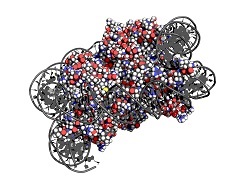Molecular Electron Density Theory as the new paradigm in organic chemistry
Your organic chemistry textbook is wrong. “Most of these textbooks explain why and how organic reactions take place using chemical concepts and symbolism developed back in the early 20th century,” says Mar Ríos-Gutiérrez, a professor of Organic Chemistry at the University of Valencia(opens in new window). Since then, there’s been a growing interest in explaining chemistry by means of electron density. This trend was formalised by the Molecular Electron Density Theory (MEDT), which holds that changes in the molecular electron density – not molecular orbital interactions – are responsible for the reactivity of organic molecules. “Although findings obtained when applying this new interpretative paradigm contradict classical organic chemistry explanations, those classical explanations are still found within many textbooks and even recent research articles,” adds Ríos-Gutiérrez. Deciding it was time for a revision, Ríos-Gutiérrez set out to refine old concepts to align them with the analysis of molecular electron density. With the support of the EU-funded Extending MEDT(opens in new window) project, her goal was to convince a broader community of chemists to use MEDT. What she ended up doing shook the core of organic chemistry.
Challenging traditional assumptions in organic chemistry
Using MEDT and new quantum-chemical tools based on electron density, Ríos-Gutiérrez brought into question the three main pillars of organic chemistry, namely, the pericyclic mechanism, the aromaticity of transition state structures, and the mechanisms of [3+2] cycloaddition reactions, which have been erroneously named 1.3-dipolar cycloadditions. “We found that some of the most important organic reactions, such as the aromatic nucleophilic substitutions and cycloaddition reactions, are non-concerted, meaning the bonding changes are not simultaneous but sequential,” explains Ríos-Gutiérrez. “This finding challenges the traditional assumption that one-step reactions are concerted.” Another important achievement had to do with classifying organic reactions as either a forward, reverse or null electron-density flux. This classification was done based on the direction of the global electron density transfer that occurred during the reaction. “This unequivocal classification allows one to unambiguously establish the behaviour of the reagents in a chemical reaction without relying on the use of conventional classifications,” she adds.
A new era in interpreting organic chemistry
According to Ríos-Gutiérrez, these results have advanced the recognition of MEDT as the standard for explaining the reactivity of organic molecules. “By establishing a new, modern and more solid rationalisation of organic chemical reactivity based on molecular electron density, we’ve ushered in a new era in understanding and interpreting organic chemistry.” That being said, Ríos-Gutiérrez is quick to point out that there is still much more work to be done. “There are many groups still applying outdated interpretations,” she remarks. “That is why I remain committed to developing and divulging MEDT as the new paradigm in organic chemistry.” Ríos-Gutiérrez’s research was undertaken with the support of the Marie Skłodowska-Curie Actions programme(opens in new window).





